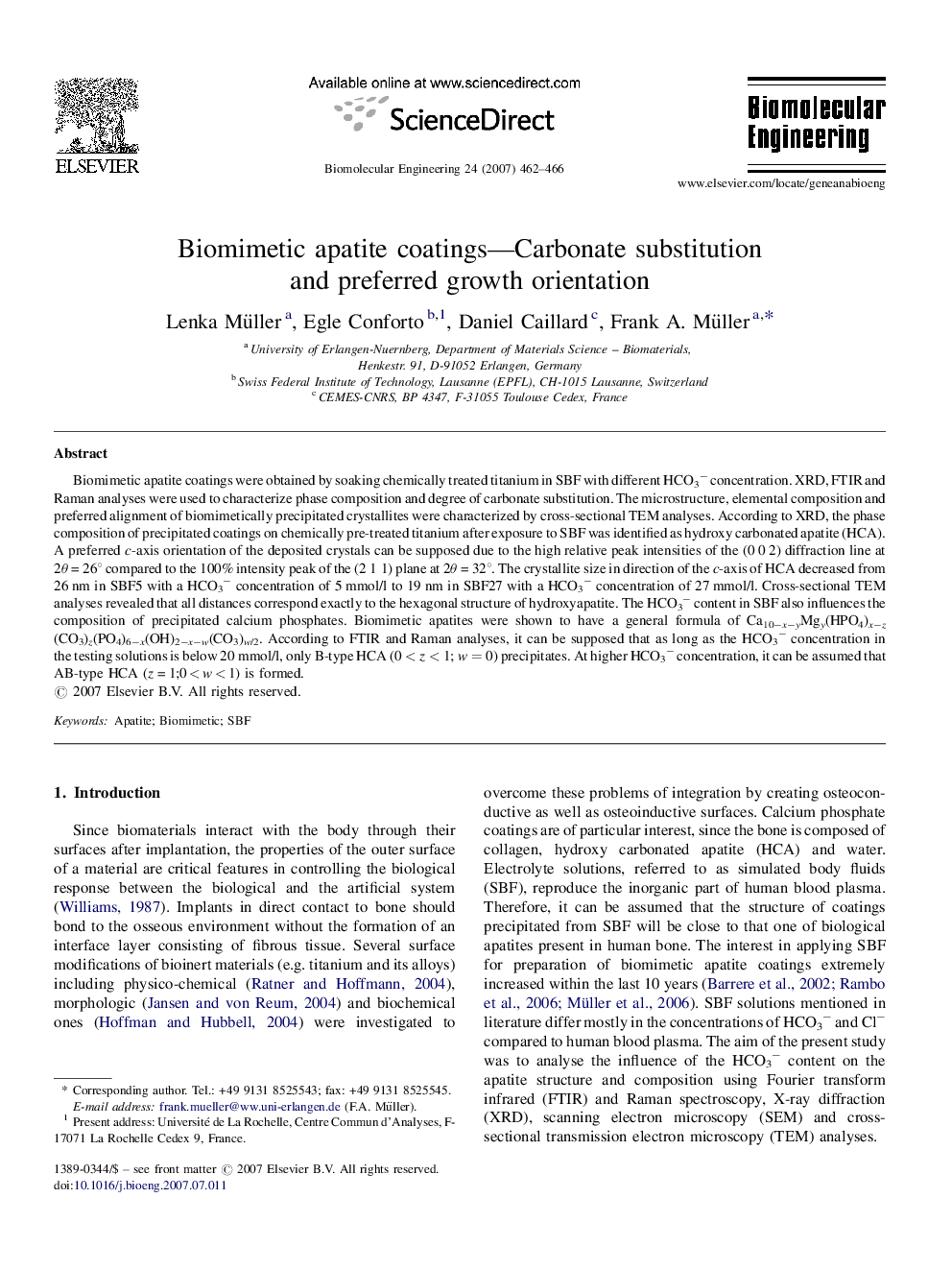| کد مقاله | کد نشریه | سال انتشار | مقاله انگلیسی | نسخه تمام متن |
|---|---|---|---|---|
| 14126 | 1175 | 2007 | 5 صفحه PDF | دانلود رایگان |

Biomimetic apatite coatings were obtained by soaking chemically treated titanium in SBF with different HCO3− concentration. XRD, FTIR and Raman analyses were used to characterize phase composition and degree of carbonate substitution. The microstructure, elemental composition and preferred alignment of biomimetically precipitated crystallites were characterized by cross-sectional TEM analyses. According to XRD, the phase composition of precipitated coatings on chemically pre-treated titanium after exposure to SBF was identified as hydroxy carbonated apatite (HCA). A preferred c-axis orientation of the deposited crystals can be supposed due to the high relative peak intensities of the (0 0 2) diffraction line at 2θ = 26° compared to the 100% intensity peak of the (2 1 1) plane at 2θ = 32°. The crystallite size in direction of the c-axis of HCA decreased from 26 nm in SBF5 with a HCO3− concentration of 5 mmol/l to 19 nm in SBF27 with a HCO3− concentration of 27 mmol/l. Cross-sectional TEM analyses revealed that all distances correspond exactly to the hexagonal structure of hydroxyapatite. The HCO3− content in SBF also influences the composition of precipitated calcium phosphates. Biomimetic apatites were shown to have a general formula of Ca10−x−yMgy(HPO4)x−z(CO3)z(PO4)6−x(OH)2−x−w(CO3)w/2. According to FTIR and Raman analyses, it can be supposed that as long as the HCO3− concentration in the testing solutions is below 20 mmol/l, only B-type HCA (0 < z < 1; w=0w=0) precipitates. At higher HCO3− concentration, it can be assumed that AB-type HCA (z = 1;0
Journal: Biomolecular Engineering - Volume 24, Issue 5, November 2007, Pages 462–466